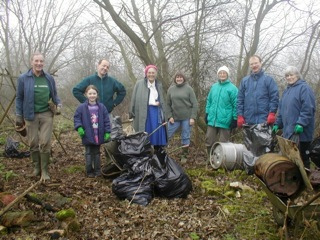Village Greens: the Oxfordshire ‘Trap Grounds’ case is decided at last
- Complaining about the Mainland - 17th August, 2024
- New island designation – is it just greenwash? - 26th April, 2024
- Police and Crime Commissioners – a solution or a problem? - 21st April, 2024
This one’s complicated but do try to keep up. Land can be registered as a town or village green if it has been used by local people for’lawful sports and pastimes’ (ie informal recreation) for 20 years freely and openly. What this means has until now been less clear but it certainly makes it harder for a developer to build on a bit of land if this status can be proven. Sadly, the law behind this is a right tangle, and the Ranger has had many dealings with it which don’t really give him much confidence in it. Recently, the House of Lords ruled on a bit of this law and clarified one crucial part of this whole mess. Lots of people have been waiting for this ruling for months or even years; the original application dates back to 2002. The ruling concerned a bit of land in Oxfordshire called the ‘trap grounds’. However it is relevant to land throughout England.
In short, the previous (Appeal Court) ruling held that if somebody applied to register a village green, all a disgruntled landowner had to do to defeat the application was to fence off the land and keep people out in the period after the application had been made but before it was decided. So almost any such claim could be defeated very easily, regardless of whether or not local people had been using the land for lawful sports and pastimes in the past. The recent ruling changes this and says that the use of the land has to be up until the application, not necessarily up until the decision. So nothing the landowner does to exclude people after he finds out that an application has been made will necessarily affect the application. A number of other interesting matters are addressed in the judgement. The issue of what you can and cannot do on a new village green is considered at last, and it is suggested that
…land registered as a town or village green can be used generally for sports and pastimes.
The judgement also clarified the application of a Victorian statute (Section 29 of the Commons Act 1876) which says:
An encroachment on or inclosure of a town or village green, also any erection thereon or disturbance or interference with or occupation of the soil thereof which is made otherwise than with a view to the better enjoyment of such town or village green or recreation ground, shall be deemed to be a public nuisance…
This statute is now clearly applicable to newly created village greens – a point of great significance for potential developers. So, this means that it might be easier to claim Village Greens, and then keep them. However, the Ranger finds the system still unjust. There is still no real duty or even expectation that anyone would manage or maintain such places. It is still possible for an applicant to use the process to frustrate or at least seriously delay legitimate development proposals – similarly, it seems to encourage landowners to prevent such customary use of their land at all costs, rather than consider ways of accommodating it, even if new development occurs. Uniquely amongst the legislation he is required to administer, the Ranger believes that the entire Village Green statutory process is a red herring that confuses and misleads both those objecting to planning applications and those seeking to gain consent to develop land. It is so complex and flawed that the whole thing should be swept away and new purpose-made primary legislation should take its place.


Even if the land was registered as a village green, you would still be the owner of it. Land can only be registered if it has been used without challenge by local people for lawful sports and pastimes for a very long period of time. It is up to the applicants to prove this, to the satisfaction of an expert appointed Inspector, if the case goes to a non-statutory public inquiry. The landowner is able to object to the application and put his case to the Inspector. The odds are generally stacked against the applicant, who has to prove the claim. If the application is valid and the claim is found to meet all the statutory requirements for registration as a town or village green then that is what is likely to happen. It sounds to me that your erection of signs after the first application was too late to defend against a follow-on claim – especially if the required period of use was completed before you put up the signs. It would be interesting to hear the outcome of the 2nd inquiry and the Inspectors reasons for making his recommendation.
We have a large garden 3.5 acres is woodland. We have no intention to develope our land, we have lived here since 1983. We as retired people have been taken to an inquiry twice. The first time our land was excluded from an application, and the woodland of 22 acres was registered. We erected notices after this awful ordeal that cost us privately a lot of money to defend. The signs were continually vandalised. We then went to considerable cost to have a fence erected around our garden. This was in 2005. By 2007 a new law Section 15 came into being and we were put under the same ordeal again. The 2nd inquiry has just finished and we are awaiting the inspectors findings.
We are so upset by the whole ordeal, we are good people just wanting to live out our lives in peace and quite. I can not beleive this new twist on the law was intended to take peoples gardens away from them.